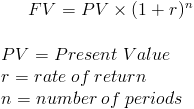What is Money?
There are two types of Money (M1), or assets that can be easily used to purchase goods and services.
Currency in circulation is all the money held by the population
Checkable bank deposits are all the funds held in bank accounts in which individuals can write checks off of
Traveler's checks
Another type of money that is "almost" checkable would be money in saving accounts, CDs or money market accounts
Without money, we would barter and there would have to be a "double coincidence of wants" in order for exchange to take place
M1
Cash
Money in checking accounts
Traveler's checks
M2
All money in M1 plus "near-moneys"
Saving accounts
Certificate of Deposits
Money Market Funds


Roles of Money
Medium of Exchange
Money is used as a medium of exchange rather than consumption
Germany, in 1923, used eggs and lumps of coal as its medium of exchange during hyperinflation
Store of Value
Means of holding purchasing power over time
Burgers, while delicious, would make terrible money because it's not a good store of value
Unit of Account
Measure used to set prices and make economic calculations
Easier to measure value with money than through barter
Types of Money

Commodity Money
- Good that is used as a medium of exchange that has intrinsic value, like silver, gold or cigarettes
Commodity-Backed money
- Paper money that has no intrinsic value but is backed by a commodity, usually gold or silver
Fiat Money
Money that's used which has no intrinsic value
Governments have the power to create money out of thin air and cause inflation
e.g. Federal Reserve notes
In 2009, Zimbabwe abandoned the Zimbabwean dollor - foreign currencies are used
Inflation in 2007 - 66,212.3%
Inflation in 2008 - 231,150,888.87% (1 month)
Preset vs. Future Value
Future Value is the amount a lump-sum of money is worth after a specified time in the future
Formula
